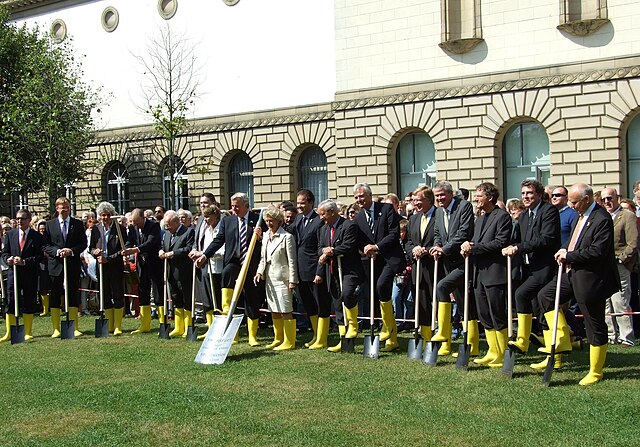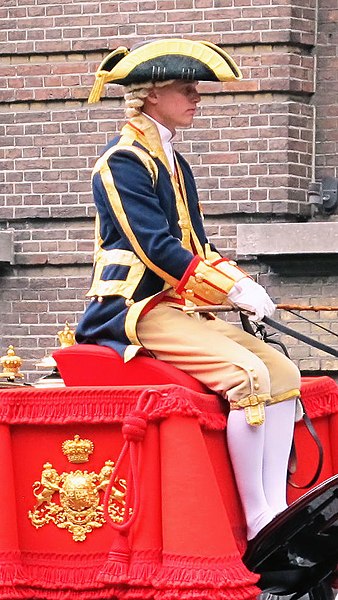Groundbreaking, also known as cutting, sod-cutting, turning the first sod, turf-cutting, or a sod-turning ceremony, is a traditional ceremony in many cultures that celebrates the first day of construction for a building or other project. Such ceremonies are often attended by dignitaries such as politicians and businesspeople.
Groundbreaking ceremony for Hunts Point Cooperative Market in New York City (1962)
Groundbreaking ceremony with shovels, marking the start of construction of the new Städel Museum in Frankfurt am Main on September 6, 2009.
Groundbreaking ceremony with an excavator, marking the start of construction of the new Line 6 of the Santiago Metro on September 13, 2012, in which President Sebastián Piñera (fourth from left) took part.
Turning the first sod at Sault Ste-Marie. July 30, 1890, on the first publicly owned power canal constructed in Canada, for the general distribution of power for industrial purposes.
A ceremony is a unified ritualistic event with a purpose, usually consisting of a number of artistic components, performed on a special occasion.
Ceremonial at court during Prinsjesdag
Leaders welcome a boy into Scouting, March 2010, Mexico City, Mexico.
Senator Lionel Murphy, founder of the civil celebrant movement in Australia, which has now spread to the rest of the Western World
Israel Defense Forces Chief of Staff Lt. Gen. Benny Gantz salutes Yom Kippur War casualties at an official annual memorial service.








